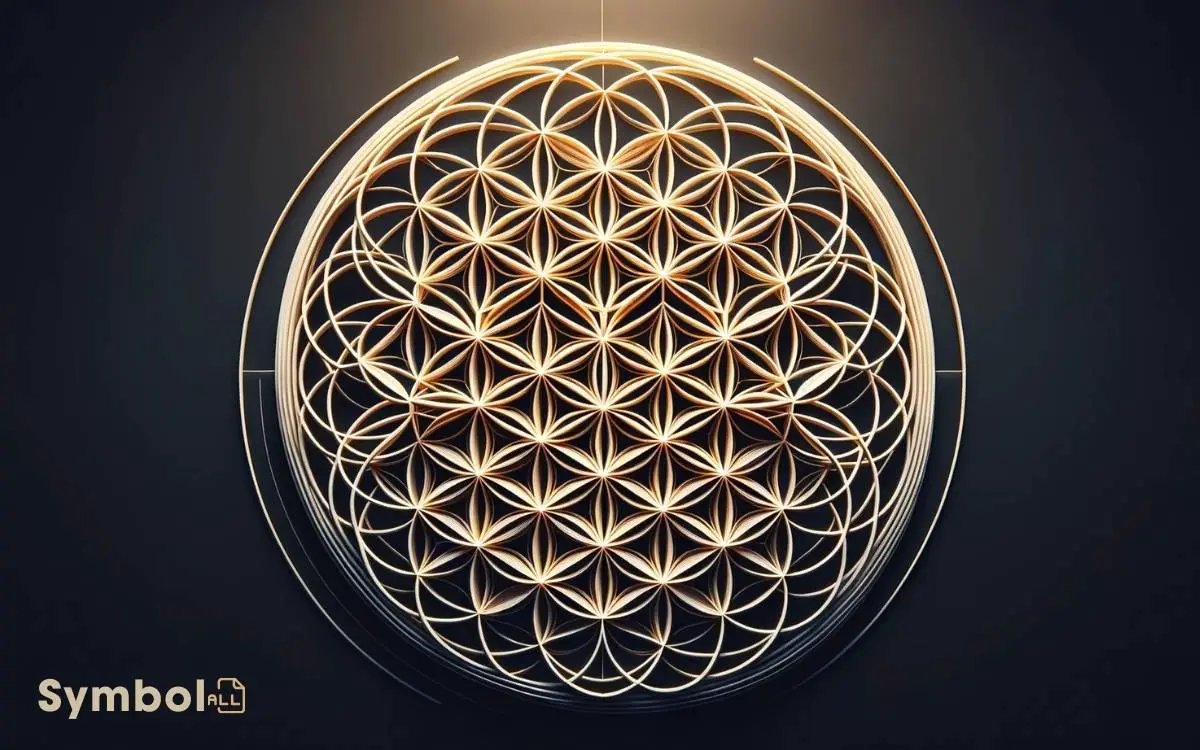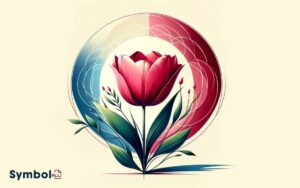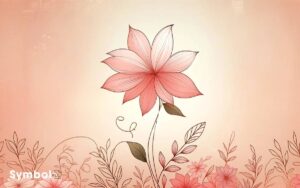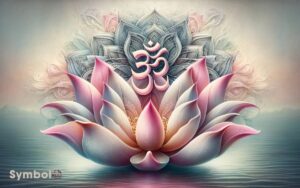The Flower of Life Symbol: Interconnectedness!
You’re exploring the Flower of Life symbol, a timeless emblem tracing back to ancient civilizations like Egypt, India, and Celtic cultures. It’s a global narrative of harmony, deeply interwoven with the cosmos’s understanding.
This symbol isn’t just an artistic relic; it signifies creation’s pattern, sacred geometry, and the interconnectedness of all existence. Its reach spans from ancient temples to modern tattoos, embodying unity across diverse cultures.
Whether through its spiritual significance, mathematical elegance, or healing properties, the Flower of Life transcends time, offering a blueprint of consciousness and reality. Unpacking its layers, you’ll uncover a rich tapestry of insights into our interconnected universe.

Key Takeaways
Historical Origins
The Flower of Life symbol, often traced back to ancient civilizations, embodies a profound spiritual significance that has permeated various cultures and epochs. You’d find its earliest depictions in the temples of Osiris in Egypt, dating back over six millennia.
Its presence there isn’t just ornamental; it’s deeply woven into the fabric of their understanding of the cosmos.
Moving beyond Egypt, this symbol’s reach extended to ancient India, China, and even as far as the Celtic cultures of Europe, acting as a bridge between diverse spiritual practices.
Each civilization has embraced and incorporated it into their sacred art, architecture, and manuscripts, hinting at a universal reverence for its design.
This widespread adoption suggests a shared recognition of its importance, making it a truly global emblem of harmony and interconnectedness.
Symbolic Interpretations
You’ll find that the Flower of Life symbol carries deep ancient spiritual significance, reflecting beliefs and practices that have transcended time.
Its modern cultural adoption showcases its versatility and enduring appeal across different societies, often imbued with new meanings.
Additionally, the symbol’s mathematical connections reveal a fascinating blend of art and science, highlighting its universal beauty and complexity.
Ancient Spiritual Significance
Throughout history, various cultures have revered the Flower of Life as a powerful emblem encapsulating the fundamental aspects of space and time.
This symbol’s ancient spiritual significance can be distilled into several key interpretations:
- Representation of Creation: It’s believed to symbolize the pattern of creation itself, illustrating how life emerges from a singular source.
- Sacred Geometry: The Flower of Life is a prime example of sacred geometry, reflecting the underlying geometric patterns found throughout the universe.
- Symbol of Unity: It serves as a visual metaphor for the interconnectedness of all life forms, suggesting a fundamental unity behind apparent diversity.
- Blueprint of Consciousness: The symbol is thought to embody a cosmological blueprint, guiding the expansion of consciousness and the understanding of the nature of reality.
Modern Cultural Adoption
In modern times, people frequently adopt the Flower of Life symbol, integrating its ancient meanings into contemporary cultural contexts and personal identity narratives.
This adoption isn’t merely aesthetic; it’s a deliberate choice to resonate with the symbol’s profound implications of interconnectedness and unity.
You’ll find it adorning everything from jewelry to tattoos, serving not just as an ornament but as a personal totem reflecting a deep-seated belief in the interconnected nature of the universe.
This cultural appropriation bridges the gap between ancient spirituality and modern existential quests, embodying a longing for understanding and a sense of belonging in the vast tapestry of existence.
The Flower of Life becomes a canvas on which individuals project their quests for meaning, spirituality, and connection, seamlessly weaving ancient wisdom into the fabric of modern identity, indicating a deep-seated connection to the symbol’s rich symbolism and spiritual significance.
Mathematical Connections
Beyond its spiritual allure, the Flower of Life symbol harbors profound mathematical connections, weaving a narrative that bridges the abstract with the tangible.
As you explore its intricacies, you’ll discover:
- Geometric Harmony: The symbol exemplifies perfect symmetry and balance, embodying principles of sacred geometry.
- Fibonacci Sequence: Elements of the design echo the Fibonacci sequence, a series intrinsic to growth patterns in nature.
- Platonic Solids: Hidden within the symbol are the five Platonic solids, fundamental to the study of space and form.
- Golden Ratio: The proportions of the Flower of Life reflect the Golden Ratio, illustrating its significance in aesthetics and architecture.
These connections invite you to appreciate the symbol’s mathematical elegance, revealing layers of meaning that resonate with both the analytical mind and the spiritual seeker.
Geometric Analysis
You’ll find that the origin and mathematical structure of the Flower of Life symbol are steeped in history, revealing patterns that have fascinated mathematicians and spiritual seekers alike.
Exploring its construction techniques offers insights into the minds of ancient architects and artists, who encoded complex knowledge within simple forms.
The connections to sacred geometry further illuminate its role in bridging the physical with the metaphysical, inviting a deeper understanding of the universe’s interconnectedness.
Origin and Mathematical Structure
Exploring the Flower of Life’s origins reveals a deep-rooted connection to ancient symbolism and complex geometric structures that have fascinated mathematicians and scholars alike.
This pattern isn’t just a simple design; its mathematical structure is a proof of the knowledge of early civilizations and their understanding of geometric principles.
Here’s a breakdown of its mathematical structure:
- Interlocking Circles: The design consists of multiple, evenly spaced, overlapping circles, forming a flower-like pattern.
- Sacred Geometry: It represents fundamental aspects of space and time.
- Metatron’s Cube: Derived from the Flower of Life, this structure contains every shape that exists within the universe.
- Perfect Form: It symbolizes the cycle of creation, depicting how life emerges from a singular source.
This geometric marvel isn’t just a visual feast but a bridge connecting spirituality, science, and philosophy.
Construction Techniques Explained
While it may seem complex at first, constructing the Flower of Life follows a precise and methodical process that intertwines geometry and symbolism. You’ll start with a single circle, then draw six more circles intersecting at its center, forming a hexagonal pattern.
This initial figure is known as the Seed of Life, a foundation from which the Flower unfolds. Expanding outward, each subsequent layer involves drawing circles centered on the intersections of the previous layer’s arcs.
It’s a repetitive, meditative act, reflecting both the mathematical precision and the deeper meanings embedded within this sacred symbol.
Through this process, the Flower of Life emerges as a complex, symmetrical structure, offering a visual metaphor for the interconnectedness of life and the cosmos.
Sacred Geometry Connections
Having outlined the method of constructing the Flower of Life, let’s now examine its role within sacred geometry and what this reveals about our understanding of the universe.
Sacred geometry, encompassing the Flower of Life, explores how shapes and patterns are foundational to the physical world and our consciousness.
- Universality: The Flower of Life symbol is found globally, suggesting a universal principle at its core.
- Harmony: Its perfectly symmetrical pattern embodies the harmony inherent in the cosmos.
- Creation: Many believe it represents the fundamental forms of space and time, illustrating the interconnectedness of all things.
- Spirituality: It’s used as a meditation tool, guiding individuals on a journey towards spiritual awakening and enlightenment.
This exploration offers deep insights into the fabric of reality, bridging the physical with the metaphysical.
Cultural Significance
The Flower of Life symbol holds deep cultural significance across various traditions, embodying concepts of creation, unity, and harmony.
You’ll find it etched into the ancient temples of Egypt, serving not just as decoration but as a profound representation of the interconnectedness of life.
In China, it’s woven into the fabric of their oldest philosophical texts, symbolizing the fundamental order of the universe. Across the Mediterranean, it adorned the floors and walls of Greco-Roman architecture, reflecting the belief in a harmonious cosmos.
Through an ethnographic lens, you’ll see it’s not merely a geometric pattern. It’s a cultural artifact that transcends borders, carrying with it a shared human understanding of the world’s intricate beauty.
This universal appreciation underscores its enduring relevance in cultural expressions worldwide.
Spiritual Meanings
You’ll find that the Flower of Life symbol transcends mere artistic depiction, embodying the profound spiritual concept of universal connectivity.
This motif serves as a key to sacred geometry insights, revealing patterns that are foundational to the structure of our universe.
Through its intricate design, it offers a lens to explore the interconnectedness of all living things, grounding its spiritual significance in observable reality.
Universal Connectivity Essence
Within spiritual traditions, the Flower of Life symbol represents a profound connection to the universe’s fabric, embodying the belief in an interconnected cosmos where every entity is linked.
This concept of universal connectivity isn’t just a philosophical abstraction but serves as a foundational principle in various spiritual practices.
- Unity in Diversity: It suggests that despite apparent differences, all forms of life share a common origin.
- Energy Patterns: The symbol is thought to illustrate the basic energetic patterns through which life evolves.
- Consciousness Expansion: Engaging with this symbol can inspire individuals to recognize their part in the larger cosmic story.
- Harmony and Balance: It serves as a reminder of the importance of living in harmony with the natural world and with one another.
Sacred Geometry Insights
Exploring Sacred Geometry reveals profound spiritual meanings, offering insights into the patterns that govern the universe and our place within it.
As you investigate this ancient wisdom, you’ll find that symbols like the Flower of Life aren’t mere decorations. They’re intricate maps of the cosmos, embodying the belief that all life is part of a divine, geometric plan.
This perspective invites you to see beyond the physical, recognizing the interconnectedness of all things. Through this lens, the universe isn’t a random assembly of parts but a harmonious whole, where each element resonates with the others.
Understanding these connections deepens your appreciation of the spiritual dimension, guiding you toward a more holistic view of existence. It’s a journey into seeing the world and yourself as integral parts of a larger, sacred pattern.
Artistic Representations
Artists around the globe have drawn inspiration from the Flower of Life, weaving its intricate patterns into various forms of art and architecture.
This symbol’s universal appeal lies not only in its aesthetic beauty but also in its perceived sacredness, transcending cultural and historical boundaries.
Here are four key areas where the Flower of Life has made its mark:
- Ancient Temples: Its presence in sacred structures hints at a profound spiritual significance.
- Modern Art: Contemporary artists interpret the symbol in diverse mediums, exploring its form and meaning.
- Fashion Design: Patterns influenced by the Flower of Life adorn textiles, infusing them with a sense of harmony and interconnectedness.
- Public Spaces: Murals and sculptures in urban areas invite reflection on the interconnectedness of life, echoing the symbol’s ancient roots.
Each representation serves as a bridge, connecting viewers to a deeper understanding of the world and themselves.
Mathematical Connections
The Flower of Life symbol serves as a fascinating example of how ancient geometry intersects with universal patterns in nature, inviting you to explore further into its mathematical intricacies.
Embedded within its design, you’ll find a rich tapestry of mathematical significance, echoing the principles of sacred geometry. This symbol, composed of multiple evenly spaced, overlapping circles, forms a flower-like pattern that has been revered in various cultures around the world.
Its structure illustrates the principle of Vesica Piscis, an elemental geometric construction that’s foundational in the derivation of the Golden Ratio a concept deeply intertwined with aesthetics, growth patterns in nature, and even the proportions of the human body.
Delving into the Flower of Life’s geometry, you’re not just uncovering the beauty of mathematical relationships, but also how these relationships manifest across the natural world and human culture, bridging the gap between the seen and unseen, the scientific and the mystical.
Modern Usage
In today’s world, one can observe the Flower of Life symbol permeating various aspects of modern culture, from architecture to popular media, illustrating its enduring influence and versatility.
This presence showcases not just a visual appeal but also a deeper connection that resonates with contemporary society.
Here’s how it’s integrated today:
- Fashion and Jewelry: Designers incorporate the pattern into clothing and accessories, symbolizing harmony and enlightenment.
- Interior Design: Wall art, furniture, and home decor feature the symbol for its aesthetic and supposed energetic benefits.
- Tattoo Art: Individuals choose this design for its spiritual significance, often as a reminder of interconnectedness.
- Digital Media: Visuals in movies, games, and apps use the symbol to evoke mystery or convey themes of unity and structure.
This broad adoption highlights a collective fascination with ancient symbols and their meanings, reflecting a deep-seated human need for connection and understanding.
Sacred Geometry Context
Delving into its sacred geometry context, the Flower of Life symbol serves as a profound illustration of the universe‘s interconnectedness and complexity.
This emblem, consisting of multiple evenly-spaced, overlapping circles, forms a flower-like pattern that has been revered across various cultures for centuries.
At its core, it epitomizes the fundamental aspects of space and time, encapsulating the geometric principles that are believed to underpin all of creation.
Through its intricate design, the Flower of Life symbolizes the cycle of creation, where every existence is viewed as emanating from a single source.
This perspective encourages a deeper introspection into the fabric of reality, urging you to recognize the unity and harmony that lies beneath the apparent chaos of the cosmos. Essentially, it’s a visual expression of the interconnectedness of life and the cosmos.
Global Presence
Traversing through history, you’ll find the Flower of Life symbol leaving its mark across diverse cultures and civilizations around the globe.
This ubiquity reflects not just a shared appreciation for geometric beauty but also a deeper, interconnected understanding of the universe.
- Ancient Egypt: Carved into the Osireion at Abydos, hinting at its spiritual significance.
- Medieval Europe: Found in Gothic and Renaissance architecture, embodying the era’s quest for knowledge and divine connection.
- China: Present in forbidden city’s architecture and artifacts, symbolizing harmony and balance.
- Modern Tattoos: Adopted for its aesthetic appeal and its representation of life’s interconnectedness.
Each instance of the symbol’s appearance adds another layer to its global narrative, illustrating a collective fascination with the cosmos and our place within it.
Healing Properties
Exploring the Flower of Life‘s global journey reveals its profound impact, not only culturally but also in the domain of healing properties believed to influence both physical and spiritual well-being.
This sacred geometry, encompassing an intricate pattern of overlapping circles, resonates deeply within various healing practices. It’s viewed as a visual expression of the connections life weaves through all sentient beings, offering a harmonious blueprint that fosters healing energies.
Cultures around the world have harnessed its geometric harmony, believing it to aid in the alignment of physical, emotional, and spiritual planes.
This ethno-medical perspective underscores the symbol’s role in promoting balance and facilitating healing processes, highlighting its significance beyond mere artistic expression.
Through this lens, the Flower of Life serves as a bridge, connecting the tangible with the transcendent, in a quest for holistic well-being.
Meditation Practices
As you explore the Flower of Life symbol, you’ll find it’s not just an artistic motif but a tool for deepening meditation practices. Techniques to enhance focus often incorporate visualizing this sacred geometry, anchoring your attention in its intricate patterns.
This practice, rooted in ancient traditions, offers a bridge between physical perception and spiritual insight, underscoring the symbol’s significance across cultures.
Enhancing Focus Techniques
To enhance your focus through meditation practices, it’s essential to grasp the numerous techniques grounded in ancient traditions and their significance in today’s fast-paced world.
These methods not only improve concentration but also foster a deeper connection to one’s inner self, providing a refuge from the chaos of daily life.
Consider the following techniques:
- Breath Focus: Concentrating on your breathing patterns to anchor your mind and eliminate distractions.
- Mantra Chanting: Repeating sacred sounds to achieve mental clarity and peace.
- Walking Meditation: Moving mindfully to cultivate awareness and a sense of grounding.
- Mindfulness Meditation: Observing thoughts and sensations without judgment to enhance present-moment awareness.
Each technique, deeply rooted in cultural practices, offers a unique pathway to enhanced focus and mental tranquility.
Visualizing Sacred Geometry
Within the domain of meditation practices, visualizing sacred geometry, such as the Flower of Life, offers a profound method for deepening one’s spiritual connection and enhancing mental focus.
This technique isn’t merely a passive observation but an active engagement with the intricate patterns that symbolize the interconnectedness of all life.
By envisioning the Flower of Life, you’re participating in a tradition that spans cultures and epochs, embedding yourself within a lineage of seekers who’ve used these geometric configurations as a bridge to the divine.
This practice encourages a mental discipline, requiring you to hold complex images in mind, thereby sharpening your concentration and facilitating a meditative state.
It’s a journey inward, where each pattern becomes a stepping stone towards greater mindfulness and spiritual awakening.
Architectural Influence
The Flower of Life symbol has profoundly influenced architectural designs, embedding its geometry into the very fabric of sacred buildings and spaces across diverse cultures.
This integration isn’t just aesthetic; it’s a profound manifestation of spiritual and philosophical concepts, translated into the physical world through architecture.
- Temples and Mosques: You’ll find the symbol in the intricate patterns gracing walls and ceilings, symbolizing the universe’s interconnectedness.
- Public Squares: Its presence in communal spaces promotes a sense of unity and harmony among those who gather.
- Gardens: The symbol’s principles guide the layout, enhancing the natural balance and beauty.
- Modern Constructions: Architects today still draw inspiration from this ancient symbol, integrating its geometry into contemporary designs to evoke a sense of continuity with the past.
Future Perspectives
As we gaze into the future, it’s clear that the Flower of Life symbol holds the potential to further revolutionize design principles, weaving its ancient wisdom into the fabric of tomorrow’s architectural marvels.
| Emotion | Aspect |
|---|---|
| Hope | As you ponder the integration of the Flower of Life into future designs, there’s a palpable sense of hope. This geometric pattern, with its roots deeply embedded in history, is poised to inspire a new era of creativity. |
| Awe | The awe you’ll feel seeing this ancient motif reimagined in modern constructions is profound. It’s a bridge between epochs, melding the past’s mystique with future innovation. |
| Curiosity | Your curiosity will be piqued by the endless possibilities this symbol introduces. How will tomorrow’s designers reinterpret this timeless pattern? Only time will tell. |
This symbol’s journey from ancient art to contemporary design is not just a tale of aesthetics but a profound lesson in the cyclical nature of inspiration and innovation.
Conclusion
As you journey through life’s intricate maze, consider the Flower of Life symbol as your key, guiding you with its ancient wisdom. Like a seed buried in the earth, it holds the hidden patterns of existence, waiting to sprout into understanding.
Its geometric harmony isn’t just a delight for the eyes but a blueprint for the soul, connecting you to the universe’s fabric. So, reflect on its lessons, let it mend, and weave its timeless essence into your being.
In doing so, you’re not just deciphering a symbol; you’re revealing the universe’s language, etched in the world’s very bones, inviting you to unravel its eternal mysteries.






